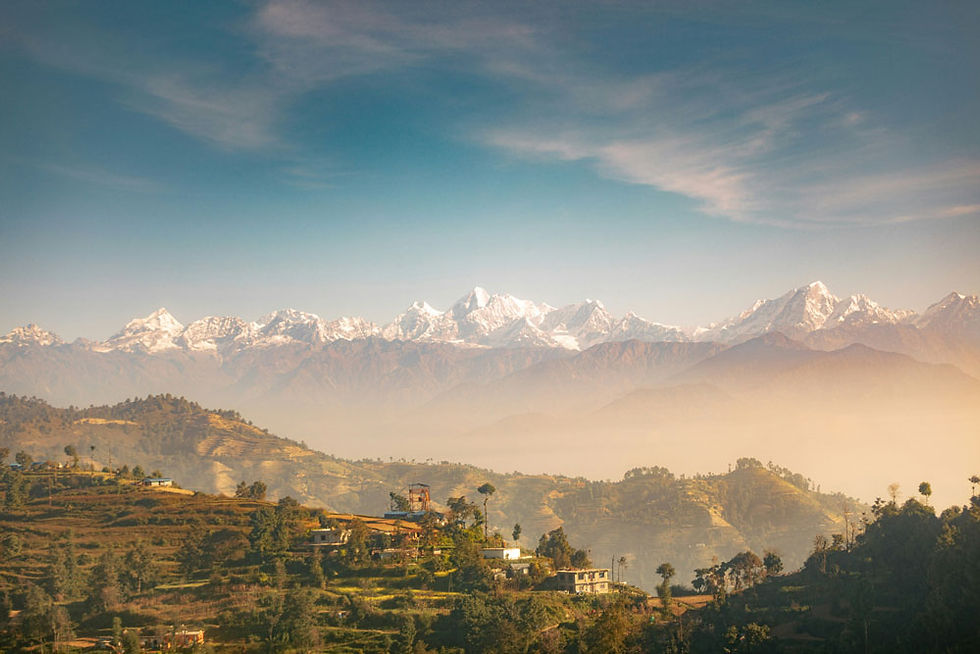Nepal’s One-Day Cannabis Freedom: Shivaratri Festival and the Sacred Plant
- Cannabis Cactus

- Aug 16
- 3 min read

Today we’re going deep into the mountains of Nepal for a story that blends spirituality, hash, and one-day freedom.
It’s called Maha Shivaratri, a sacred festival that takes place each year in late February or early March, depending on the lunar calendar. And on that day, cannabis is openly smoked and shared in public, right in front of the police… and right in honor of a god.
Maha Shivaratri means “The Great Night of Shiva.” It’s one of Hinduism’s holiest days, celebrating Lord Shiva, the god of transformation and cosmic consciousness.
Now Shiva isn’t just any deity. He’s known as the original yogi meditating in the mountains, smeared in ash, with dreadlocks and… a chillum in hand. Yep, that long clay pipe you’ve seen holy men smoking? That’s not a prop. That’s part of the ritual.
Legend has it that Shiva discovered cannabis while wandering the Himalayas. He used the plant to cool his temper and dive into deeper states of meditation. So every year on Shivaratri, sadhus (Hindu holy men) gather at Pashupatinath Temple in Kathmandu, smoking charas (Nepalese hand-rubbed hash) in Shiva’s name.
They chant “Bom Bholenath!” as they exhale thick clouds of sacred smoke. It’s both a spiritual offering and a personal journey inward.
The Art of Making Charas: Handheld Hashish
Unlike the hash most Americans are familiar with, which is often extracted with ice water or solvents, charas is made entirely by hand. And I don’t mean using gloves and machinery.
This is living plant resin collected by gently rubbing fresh cannabis flowers between the palms. As the resin builds up into a sticky, blackish-brown oil, it’s scraped off the hands and rolled into soft, fragrant balls of hashish.
The process can take hours, and skilled hashmakers will tell you: it’s about patience and rhythm. You’re literally bonding with the plant in the most tactile way possible.
Charas is still made this way in parts of India, Nepal, and even in Himalayan villages where cannabis grows wild like dandelions. It’s a tradition that predates modern extraction methods by centuries.

From Sacred to Criminal & Back Again
Here’s where it gets complicated.
Cannabis was once legal in Nepal, cultivated, sold in government-run shops, and even exported. That changed in the 1970s, when U.S. drug policy and international treaties pressured Nepal to outlaw the plant. The country passed the Narcotic Drugs Control Act in 1976, and just like that, thousands of years of cultural use were pushed underground.
But the plant never disappeared.
To this day, Nepalese farmers grow cannabis in remote regions. Sadhus smoke in secret, except during Shivaratri, when police traditionally look the other way. It’s not legally permitted, but it’s culturally protected. For one night each year, the lines between law and legend blur.
And now, legalization advocates in Nepal are pushing to bring the plant back into the light, arguing that cannabis can revitalize tourism, agriculture, and national pride.

What Can We Learn From This Ritual?
So what does this mean for us, here in Arizona or anywhere legalization is happening?
Well, for one, it reminds us that cannabis isn’t new. It’s not a trend. It’s not just an industry. It’s been sacred, political, and personal for thousands of years.
While we debate taxes, regulation, and brands, Nepal reminds us of something deeper: Cannabis is a plant with spirit.
So next time you light up, maybe skip the THC percentage talk. Take a breath. Say a quiet “Bom Bholenath.” And give thanks for the long, winding journey of this plant through empires, temples, and now… dispensaries.






Comments